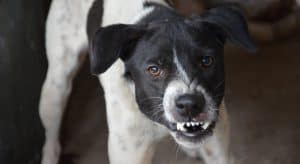As dog owners we all want what is best for our four legged pals. Making sure your dog gets enough exercise and is fed a well balanced and nutritious meal is very important for their well-being.
In this article we are going to take a look at the types of dog food available, what constitutes a balanced raw food diet, its pros and cons, how to transition to raw food from kibble and finally the options available if you would like to pursue the raw food route.
The main options for feeding your dog in the past were either :
- Dry Dog Food also better known as Kibble
- Wet Dog Food (Canned) or
- Combination of the two with some dinner scraps thrown in.
What is Kibble?
In summary, kibble is basically ground-up ingredients such as meat, grains and vegetables shaped into pellets. It is the most popular type of dog food compared to wet dog food (canned dog food)
Although the contents, calories, and nutritional content are regulated by law for commercially sold pet food, not all kibbles are the same. It is important to look at the ingredients as some brands contain preservatives, by-products, and fillers.
Wet Dog Food (Canned)
Canned dog foods are mainly composed of grounded fresh and frozen meats which are then mixed with vitamins and minerals and sometimes grains.
Again just like kibble, there are varying degrees of quality with wet dog food so it can be important to look at its nutritional content.
The main advantage kibble has over wet dog food is that kibble is easy to measure, store and you can buy it in bulk. The main advantage that wet dog food has over kibble is that it is hydrated and may be more suitable for dogs who have difficulty chewing. However, both kibble and wet dog foods are not all the same and some brands are superior in quality and contain a better nutritional value for your dog.
Raw Food
In more recent times there are now a number of additional options available in canine nutrition. One such option is providing your dog with raw dog food. However, before moving to a raw dog food diet it is very important to consult with your veterinarian and seek their advice and guidance.
A raw dog food diet has proved controversial and there are advocates and proponents of it. Some people rave about its benefits while others say the risks outweigh the benefits. you have
History of Raw Dog Food
Dr. Ian Billinghurst, an Australian veterinarian, is now recognized as the father of “Raw”. He is the founder of BARF (Biologically Appropriate Raw Food).
In the early 1980s, his clinical research looked at the commercial food market and its effects on dogs and cats. He was amazed at the dramatic healing power of raw food.
Based on his clinical research he published his first book entitled ” Give Your Dog A Bone.” The publication of this book ignited the worldwide raw pet food movement.
He argued that grain-based commercially produced dog foods was detrimental and harmful to dog’s health. Instead he argued that dogs would thrive on a diet based on what canines ate before they were domesticated such as raw meat, meaty bones and vegetables.
What is Raw Dog Food?
A raw dog food diet involves giving your dog raw ingredients rather than traditionally cooked food. Raw food includes raw meat, uncooked items such as eggs, certain fruits, and vegetables.
Dog Raw Food Diet
Muscle Meat still on the Bone
It is recommended that half to a third of your dog’s raw food should be muscle meat.
This meat is packed with proteins and provides the necessary hormones and enzymes for your dog to survive and live healthily. It also contains high levels of phosphorous which are essential minerals for your dog’s survival.
Examples of muscle meat are as follows:
Beef, Lamb, Chicken, Pork, Turkey & fish.
However, it is important to avoid high levels of fat meats such as dark chicken and turkey meat with skin and pork bellies and duck.
Bones either Ground or Whole
Bones contain high levels of calcium which is another essential mineral for your dog’s survival. A lack of calcium in your dog can lead to problems such as muscle twitching, loss of appetite, and weakness.
Organ Meats
Organ meats include livers, kidneys, etc. You could call organ meats the multivitamin for the dog world. They contain all the healthy nutrients your dog requires.
On a raw food diet, organ meats should make up approx 10 to 30%.
However it is important to point out if you are feeding liver, then limit this to a maximum of 10% of the raw food diet. The liver contains a lot of vitamin A and too much liver could lead to diarrhea. A situation you would like to avoid!
Raw Eggs
Eggs are a rich source of nutrients, vitamins, and minerals. Feeding them to your dog is a great way to increase his protein intake as eggs are the most complete sources of amino acids. Amino acids are the building blocks of protein.
Certain Fruit & Vegetables
Dogs can eat certain types of fruit and vegetables. We’ve listed the main fruits and vegetables your dog can eat safely. It is worth noting that there are several types of fruit and vegetables that are harmful to pets and should never be consumed.
Safe Fruits include
- Apples
- Bananas
- Blueberries
- Mango
- Oranges
- Pears
- Pineapple
- Raspberries.
Safe Vegetables include
- Broccoli
- Brussel Sprouts
- Carrots
- Celery
- Green beans,
- Peas
- Spinach
Raw Food – Pros & Cons
Pros of Raw Dog Food Diet
The advocates of a raw dog food diet make many claims about the benefits for your dog including the following:
Benefits for your Dog
- Reduced Allergies (Skin & Food)
- Shinier Coats
- Improved Teeth & Breath
- Reduced Arthritis & Hip Dysplasia
- Improved Immune System
- Increased Mental Stimulation
- Reduced Risk of Diabetes
- Helps Maintain Ideal Weight
Benefits for Dog Owners
- Longer, Healthier Pet Life
- Reduced Chance of Disease
- Fewer Visits to the Vet
- Lower Dental Bills
- Less Shedding
- Healthier Stool, Less Odor
- Lessen Bad Breath
- Reduced Flatulence
- Reduced Hyperactivity
- Prevent Fleas & Ticks
- Reduce or Eliminate Prescriptions
- Less Ear Wax Build Up
Cons of Raw Food Diet
1. Can be Time Consuming & Expensive
Feeding your dog a raw food diet can be both time consuming and expensive. Firstly you will need to do some research as to what makes a complete raw food diet. Then it’s a matter of sourcing the right food ingredients and then preparing the meal. You then need to make sure your kitchen is clean after handling raw food. It can be quite challenging and it may not be for everyone.
2. Possible Risk of Infection
There can be a risk of infection for you and your dog with a raw food diet. Uncooked meats can contain Salmonella, E. Coli, or other disease-causing bacteria. As well as making your dog sick he could become a carrier and pass harmful bacteria to other dogs and anybody he comes into close contact with.
It worth noting that the American Veterinary Medical Association (AVMA) does not advocate the feeding of raw food of any animal-sourced protein that has not eliminated pathogens. These pathogens can cause sickness in both animals and humans. However, it does acknowledge and recognizes that newer technologies and other methods such as irradiation are constantly being developed and implemented.
3. Need Adequate Storage
Switching to a raw food dog diet will require a lot of storage space. Buying in bulk will reduce the overall cost of a raw food diet but then you are left with the problem of storage. Where do you store raw food safely? The only real option is a freezer and unfortunately not every household has an adequate sized freezer to store all this food.
Some raw food diets may not contain the adequate number of nutrients for a balanced diet and this could trigger health issues down the line.
4. Bones Can Cause Problems
When you give your dog a bone it is always advisable to keep an eye on them. Bones can cause choking, bits of bone can break off and cause internal damage when swallowed, and also could potentially damage your dog’s teeth.
The Big Question – Should I Switch to Raw?
It’s not an easy decision to make as there are arguments on both sides so you need to carefully consider them before making a choice. It’s a question which we cannot answer for you as every dog and owner is different. What works for one dog may not suit another.
The advocates for raw food diet rave about its benefits but then on the other side, there are the downsides to consider. If you have made up your mind after a consultation with your veterinarian to switch to a raw food diet from kibble then it is recommended to follow these guidelines.
How to Transition from Kibble to Raw Food
1. Slowly Does It
The transition from kibble to raw food should be undertaken slowly. In most cases, you feed your dog 75% of his old food and 25% new. If you find that your dog has a sensitive tummy then start with 10%.
2. Check Stool & Weight Regularly
It’s important to be patient and only introduce proteins one at a time so that your dog can adjust to his new diet. Also, check that your dog’s stool normalizes after each new food is added.
It is also a good idea to weigh and monitor your dog’s weight during this transition. You may need to adjust the daily portions according to any weight fluctuations.
3. Be Flexible & Adaptable
When you embark on a raw food diet it is a continual learning experience and you need to be flexible and adaptable to change. On average it takes about 3 weeks to transition to the new raw food diet.
Although a complete raw dog food diet may not be for everyone there are some other options you could consider.
Other Options Available
Partial Raw Food Option
You could try the option of Partial Raw Feeding. You can continue to feed your dog high-end dry dog food (kibble). Often when food is cooked at high temperatures most of the natural nutrients are substantially reduced. With high-end kibble these nutrients are supplemented back into the dog food.
This ensures your dog receives adequate nutrition. You can then substitute some of the meals each month with raw food. Alternatively, just give a small portion of raw food as a special treat.
Getting Started with Raw Dog Food
If you are looking to get started and need some advice with starting a raw food diet then we recommend Raw Paws Pet Food.
Raw Paws Pet Food
Raw Paws is a family-owned American company based in Indianapolis that offers a wide selection of raw food. They offer a wide selection of products from frozen pet food, freeze-dried food, food toppers, meaty bones, snacks, and deliver throughout the United States.
They also offer what is called a Complete Meal Solution at very affordable prices. They deliver throughout the U.S.A. and are very competitively priced versus competitors. A complete meal is one that provides your dog with the right amount of nutrients in sufficient quantities so to maintain his health and well-being.
Complete food comes in several forms:
- Dry
- Wet
- Raw
High-quality complete meals make raw feeding super easy and comply with the AAFCO standards. The Association of American Feed Control Officials (AAFCO) is a voluntary membership association of local, state, and federal agencies. who regulates the sale and distribution of animal feeds and animal drug remedies.
Raw Paws also now offer a Custom Meal Plan to meet your budget. For a limited time, there is no charge for this service.
Raw Paws Pet Food has a generous selection of discounts available and if you decide to go raw then this family-owned American business is here to help you and your dog.
Save 20% with your first Autoship at RawPawsPetFood.com!
Use code AUTO.
General FAQ
Is raw feeding good for your dog?
Raw feeding is not for every dog. Some dog owners swear by raw feeding and would not consider any alternatives as they claim their dog thrives on it. Other dog owners are more cautious as there is the risk of bacterial infection and tapeworm transmission.
Can a dog get worms from eating raw meat?
Yes, a dog can get worms from eating raw meat. The most common worm transmitted with raw meat is the tapeworm. Raw meat-eating can also increase the risk of bacterial infection in dogs.
What's the healthiest dog food for dogs?
One of the healthiest dog foods we found comes from Raw Paws Pet Food. It is a Premium Chicken Kibble for Puppies. It is a complete and balanced diet with AAFCO approval. The recipe contains perfect amounts of protein, fat, and essential nutrients along with probiotics and natural prebiotic fiber.








